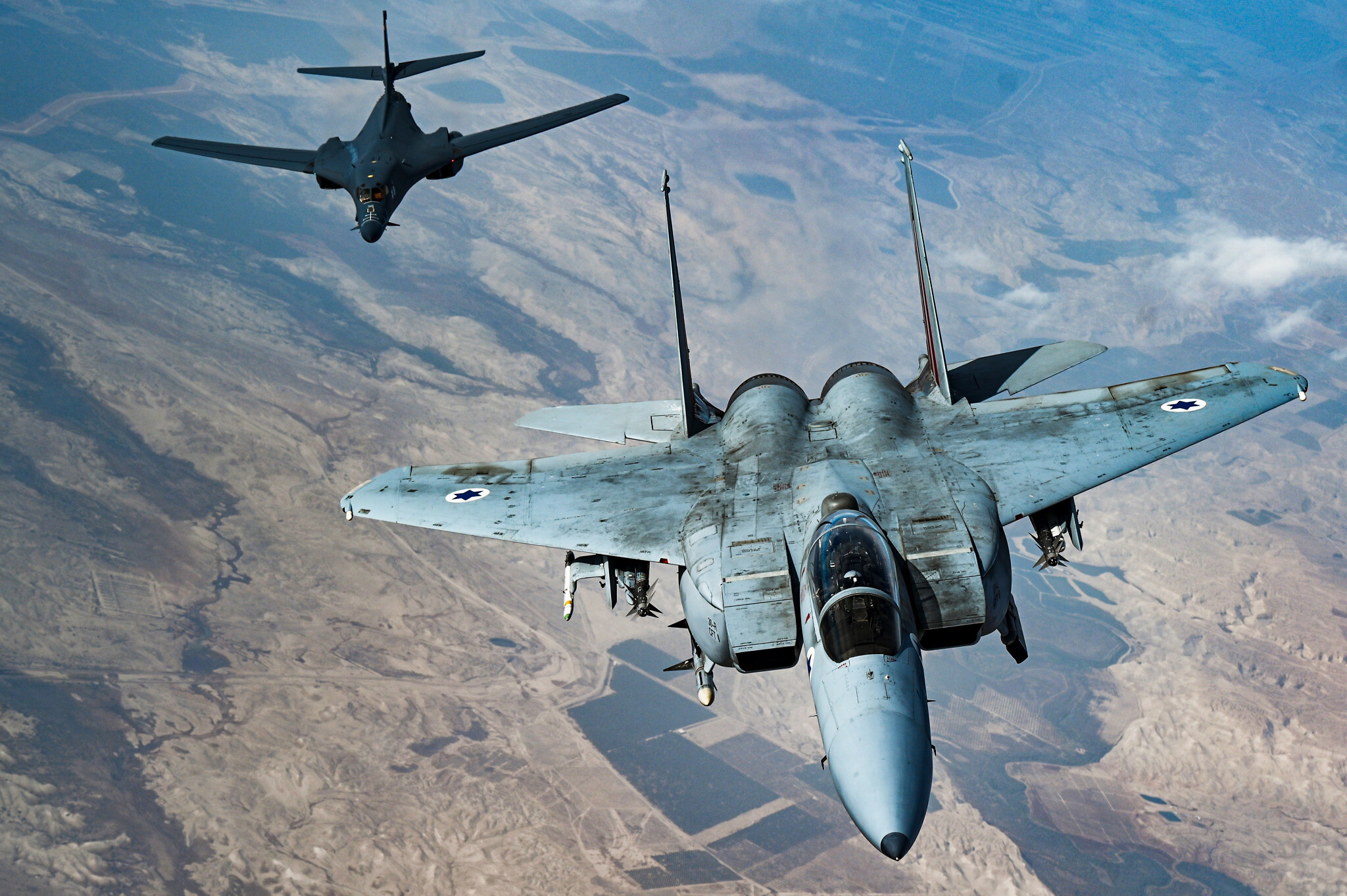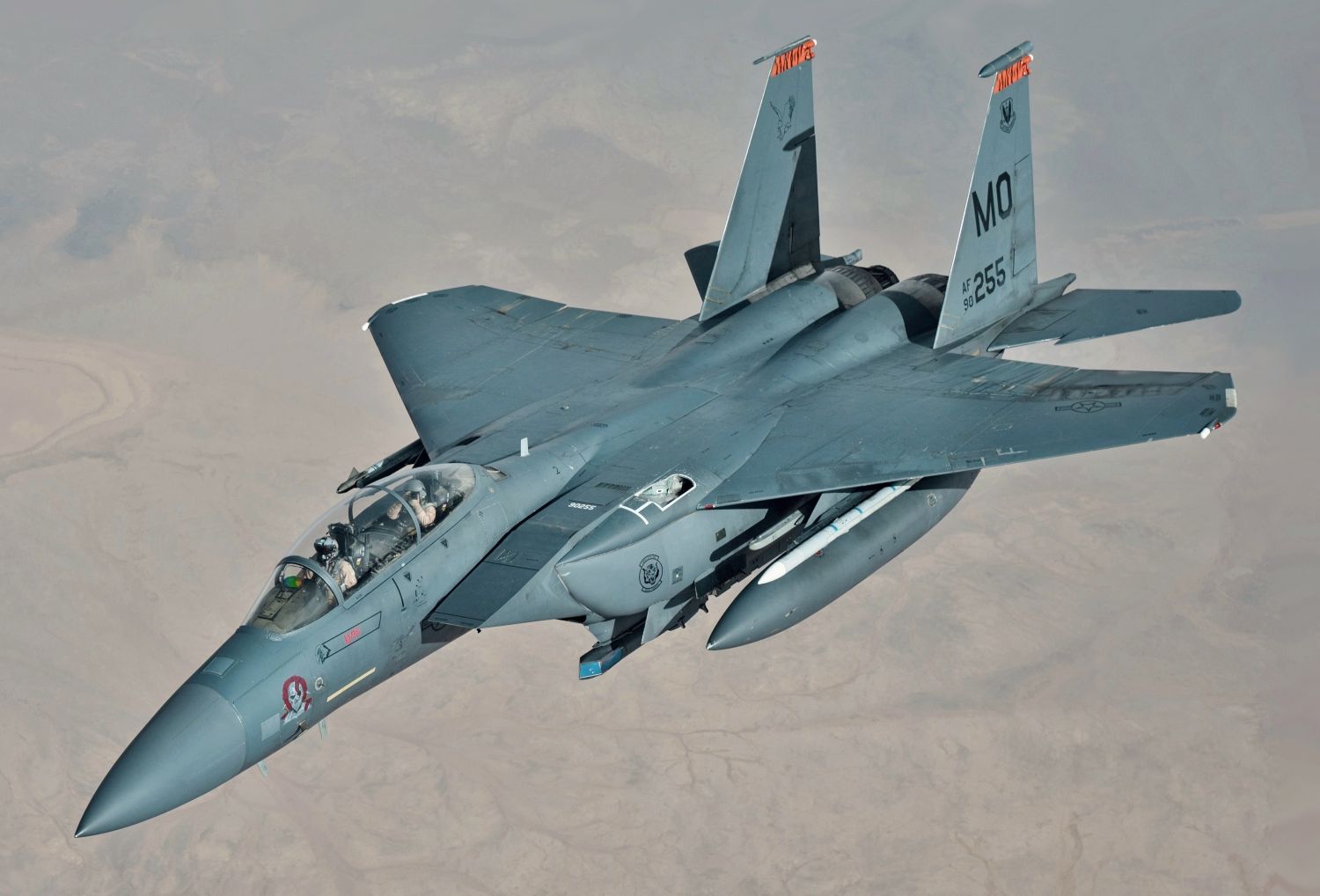In response to the brutal terror attack orchestrated by Hamas on October 7, Israel carried out thousands of airstrikes on Gaza, using F-15 and F-16 fighter jets to target Hamas positions with air-to-ground strikes.
The primary role of the F-15 fighter jet is to establish aerial dominance, yet it also serves the function of a bomber. The majority of the dropped bombs are part of the United States-designed Mk80 family, a weapon system that has been in service since the time of the Vietnam War.
Initially created as traditional free-fall weapons, commonly known as “dumb bombs,” these munitions have undergone continuous modernization. They have been equipped with advanced targeting devices, transforming them into what are referred to as “smart bombs.”
The primary workhorses of the Gaza bombing campaign are the F-15s and F-16s, which are tried-and-true aircraft models with a history of reliability and effectiveness.
One Israeli F-15 tactical fighter jet can carry a maximum load of up to 10 tons of bombs during a single mission or sortie, rendering it a powerful choice for destroying enemy positions.

The significance of F-15s within the Israeli Air Force is evident in Israel’s intent to acquire 25 F-15EX fighters from the US. However, the Israeli Air Force also expressed its intention to eventually double this order, reflecting the considerable importance and strategic value placed on these aircraft.
Earlier this year, Israel initiated the Foreign Military Sale process by sending an official Letter of Request (LOR) to the US government. Negotiations regarding specific details such as quantities and pricing follow this initial step.
The F-15EX Eagle II represents the most recent iteration of the F-15 Eagle fighter jet. While its external appearance bears similarities to previous versions, its internal components tell a different tale.
This fighter incorporates digital fly-by-wire flight controls, extensive interactive cockpit touchscreens, the fastest mission computer ever integrated into a fighter jet, and the Eagle Passive/Active Warning and Survivability System for electronic defense against enemy air threats. The United States Air Force (USAF) plans to procure 144 F-15EX aircraft from Boeing.
F-15EX: The Most Advanced Variant
On November 6, Boeing Defense released a new video featuring the F-15EX, proudly declaring, “Eagle II on the move!”
The company mentioned that the last F-15EX test aircraft, EX6, is currently in transit from the factory to the testing area, where it will undergo rigorous flight tests before being prepared for delivery to the US Air Force.
The US Air Force intends to obtain around 144 F-15EX aircraft from Boeing, marking a transition away from the older F-15C/D models.
This strategic move is aimed at improving the preparedness of the F-15 fleet and reinforcing its pivotal role within the Air Force’s defense strategy.
Nonetheless, the F-15EX Eagle II is an advanced aircraft that builds upon the proven airframe of the F-15, widely regarded as one of the world’s most lethal fighter jets.
Eagle II on the move! 🦅 The final #F15EX test jet, EX6, is moving from the factory to the ramp for flight testing before being delivered to the @USAirForce. pic.twitter.com/gommDGSLyW
— Boeing Defense (@BoeingDefense) November 6, 2023
Since its introduction in 1974, the F-15 and its various versions have achieved an impressive record, downing 104 enemy aircraft without losing a single one. The Israeli Air Force has notably claimed the most kills with the F-15.
The F-15EX Eagle II boasts exceptional performance capabilities, with an operational ceiling of 70,000 feet, speeds of up to Mach-2.5, and an effective range exceeding 1,250 miles when equipped with external fuel tanks. What makes it even more remarkable is its ability to carry nearly 30,000 pounds of weaponry.
In addition to its impressive specifications, the F-15EX features an updated cockpit system and electronic warfare capabilities, enhancing its combat effectiveness.
Foreign investment in the F-15 program led to the development of the F-15EX Eagle II, which has gained significant attention and impacted the Pentagon’s procurement plans for the F-35 Lightning II stealth fighter.
While the F-15EX is priced at approximately US$90 million per aircraft, which is more expensive than the F-35, it is expected to have a significantly longer service life of around 20,000 flight hours than the F-35’s 8,000 flight hours.
The F-15EX is well-received within the Department of Defense due to its easy integration into frontline squadrons.
With approximately 70% of parts commonality with earlier F-15 variants, it offers seamless operation and maintenance for units already familiar with its predecessors.
Transformation Of Israel’s F-15s Into Long-Range Multi-Role Strike Aircraft
The Israeli Air Force (IAF) plans to buy more F-15s fitted with advanced weapon systems developed in Israel, mainly aimed at effectively destroying heavily fortified targets, such as Iranian nuclear sites.
The IAF’s goal to acquire extra F-15s originally stemmed from the expectation that future combat situations would involve targets protected by sophisticated air defense systems.
This strategy involves deploying F-35s first to neutralize the air defense systems. Subsequently, the F-15s, often called “trucks,” would transport significant amounts of highly advanced weapon systems, some of which are still in the developmental phase.
Currently, the Israeli Air Force operates a fleet of 50 F-15 A/B/C/D variants and 25 F-15 I aircraft. The latest conflict with Hamas has once more highlighted the F-15 fighter jet’s adaptability, especially in its role in carrying out ground strike missions.
Acquired in the mid-1970s to secure Israel’s air dominance in the Middle East for an extended period, the F-15 Eagle has maintained its uncontested supremacy in the skies since its introduction in December 1976.

Initially designed as purely air-to-air fighters, the Israeli F-15s adhered to a philosophy that emphasized focusing solely on air-to-air capabilities.
However, Israel ultimately transformed their F-15s into highly effective long-range multi-role strike aircraft long before the development of the F-15E Strike Eagle.
In 1985, the Israeli F-15s, known as “Baz,” drastically transformed their role during Operation Wooden Leg, a high-stakes strike against the PLO’s Tunisian headquarters.
This marked the longest-range mission by the Israeli Air Force (IAF) at the time, utilizing the extended range of the C/D model F-15s and newly acquired aerial refueling capabilities.
The complex operation involved meticulous planning and execution to avoid detection by various radars and potential emergency scenarios. This demonstration not only showcased the F-15’s adaptability but also validated its ground attack potential, previously a lesser-known capability.
For the mission’s success, the F-15Ds were equipped with precision-guided GBU-15 glide bombs, controlled by the backseaters via an advanced data-link pod, showcasing a capacity to deliver devastating blows precisely. The aircraft successfully executed the strike, obliterating the PLO headquarters.
Despite international condemnation, this operation exemplified the F-15’s capacity not only as an air superiority fighter but also as a force capable of deterring and striking enemies far beyond Israel’s borders.
- Contact the author at ashishmichel(at)gmail.com
- Follow EurAsian Times on Google News




